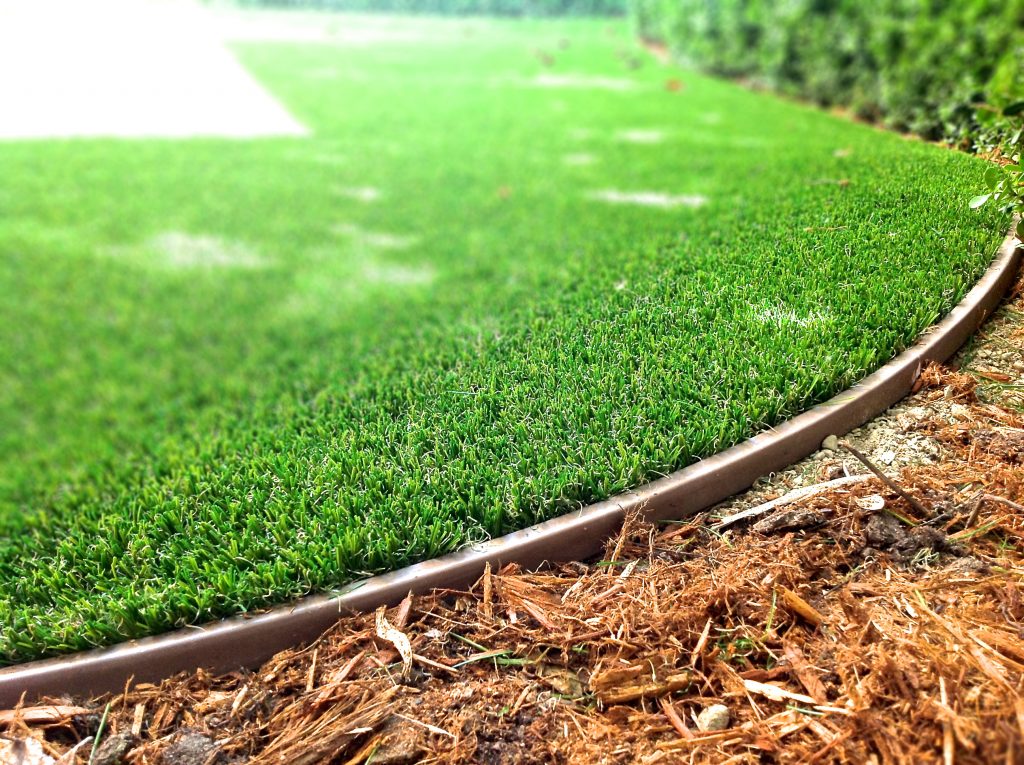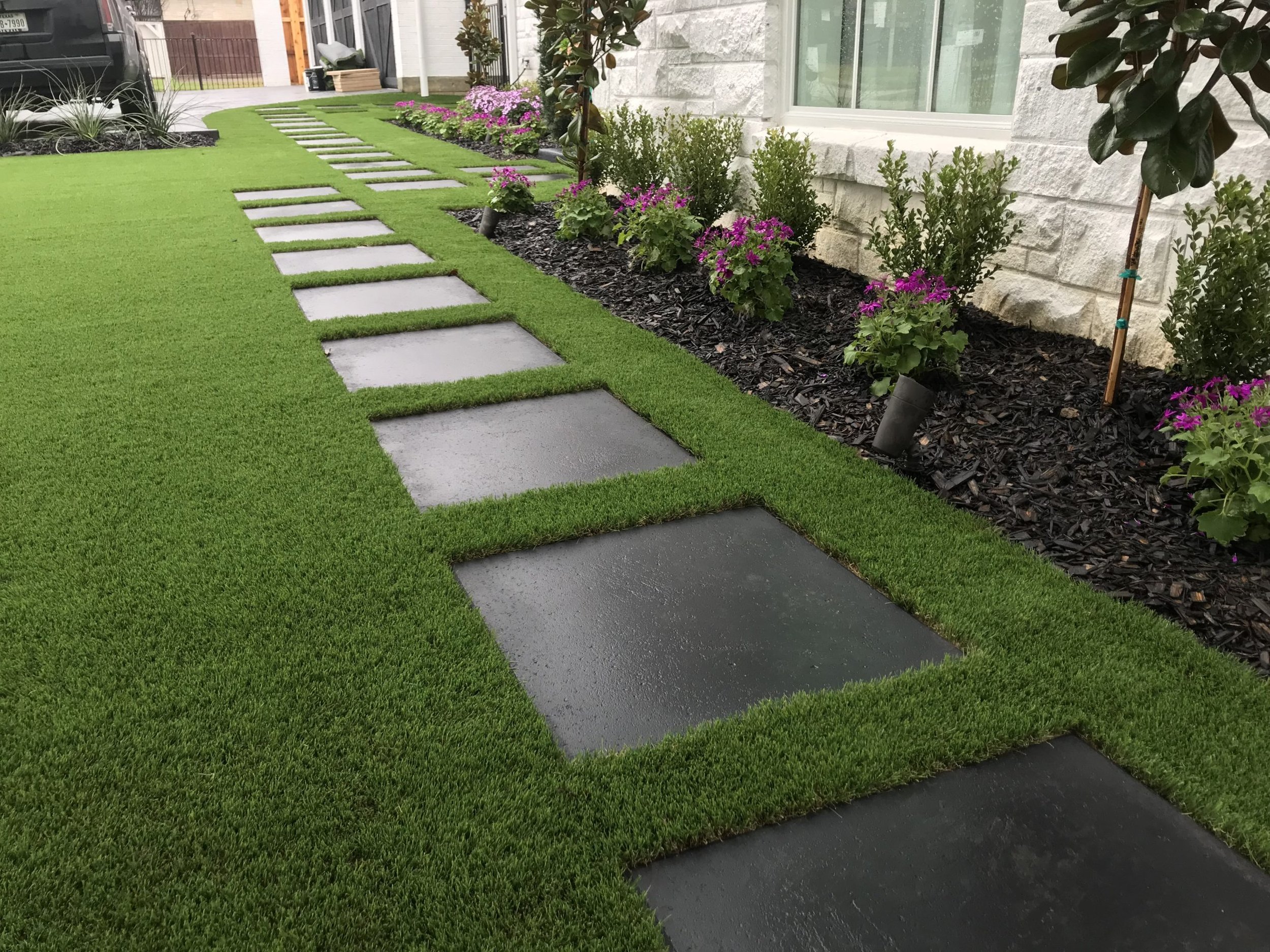Look Into the Environmental Advantages of Opting for Artificial Grass Solutions
The adoption of fabricated grass services provides a compelling opportunity to attend to pushing ecological obstacles. By substantially decreasing water use and reducing the application of dangerous chemicals, these alternatives not only advertise lasting landscape design yet also secure local environments. In addition, the reduced carbon footprint related to decreased maintenance activities adds to an extra lasting method to land administration. The implications of these benefits extend past simple conservation efforts, elevating concerns about their long-term influence on environment preservation and overall eco-friendly equilibrium. Discovering these dimensions discloses a complex interplay worth thinking about.
Water Preservation Advantages
One of one of the most considerable advantages of man-made lawn is its capacity to preserve water. Conventional grass lawns need significant irrigation, especially in locations vulnerable to drought or water restrictions. On the other hand, artificial turf does not require watering, significantly minimizing the total demand for water sources. This feature is especially beneficial in deserts where water deficiency is a pressing worry.
By removing the demand for regular watering, synthetic grass adds to lasting landscape techniques and assists alleviate the ecological effect of excessive water intake. Furthermore, the conservation of water reaches the reduction of overflow, which can result in dirt erosion and waterway pollution.
Additionally, the setup of synthetic grass enables towns and house owners to allot water resources extra successfully, concentrating on important uses such as alcohol consumption water and farming. The shift in the direction of synthetic grass not only promotes accountable water use but likewise lines up with wider environmental objectives targeted at protecting natural deposits.
As neighborhoods increasingly prioritize sustainability, the water preservation advantages of fabricated grass present a compelling instance for its fostering in household and business landscaping jobs.
Decreased Chemical Use
The shift to synthetic grass substantially decreases the dependence on chemical treatments generally used in natural lawn upkeep. Typical grass monitoring generally involves the application of fertilizers, pesticides, and herbicides to promote growth and control parasites. These chemicals can present risks to human health, regional wildlife, and the environment, adding to soil and water contamination.
In contrast, synthetic lawn removes the demand for these damaging substances. As soon as installed, it needs marginal upkeep, mainly including regular cleansing and irregular infill replenishment. This reduction in chemical use not only profits the immediate environment however additionally adds to wider ecological stability. By lessening the launch of artificial substances right into the community, synthetic turf advertises healthier dirt and water systems.
Additionally, the lack of chemical runoff connected with artificial lawn setups aids secure neighborhood waterways from pollution, sustaining water life and preserving biodiversity. Arizona turf. As areas increasingly prioritize lasting techniques, selecting synthetic grass presents a sensible solution that lines up with environmental conservation goals. Through this change, home owners can appreciate lush environment-friendly spaces without jeopardizing ecological health and wellness, paving the method for an extra lasting future
Reduced Carbon Footprint

Furthermore, the setup of artificial grass can result in substantial water conservation. All-natural yards call for substantial amounts of water for watering, which not only includes to the carbon footprint connected with water removal and treatment but additionally pressures regional water sources. On the other hand, synthetic lawn needs marginal maintenance, calling for no watering, thereby considerably minimizing water usage and its connected power costs.
Furthermore, the longevity of artificial lawn adds to its lower carbon impact. With a life expectancy of approximately 15 years or even more, the demand for regular replacements is lessened, resulting in less waste and reduced power intake in manufacturing and throwing away traditional lawn choices. Overall, synthetic grass presents a sustainable option for ecologically aware landscape design.
Environment Preservation
Environment preservation is an essential consideration in the argument over landscaping choices, especially when comparing synthetic grass to all-natural yard. Natural lawn lawns typically call for comprehensive maintenance, including making use of herbicides, plant foods, and chemicals, which can adversely influence regional ecological communities. These chemicals can seep into the dirt and waterways, damaging indigenous flora and fauna and interfering with regional habitats.
In comparison, synthetic grass provides an opportunity to reduce the environmental impact of landscape design. By selecting synthetic grass, home owners can minimize the disturbance of all-natural habitats connected with standard lawn care practices. Man-made grass removes the requirement for hazardous chemicals, thereby shielding nearby wildlife and keeping the honesty of bordering communities. In addition, the installation of synthetic lawn can lead to the conversion of previous yard locations right into more biodiverse landscapes, such as pollinator yards or indigenous plant locations, which can support neighborhood wildlife.
Inevitably, the shift to artificial lawn not only preserves water and lowers upkeep initiatives but additionally fosters a more unified partnership in between human activities and the native environment, advertising environment conservation at the same time.
Long-Term Sustainability
Long-lasting sustainability is an important factor in evaluating the advantages of artificial lawn over traditional turf yards. Among one of the most considerable benefits of synthetic grass is its toughness; redirected here it can last as much as 15-20 years with very little maintenance, whereas natural turf requires regular reseeding and replacement. This longevity decreases the demand for constant sources, such as water, fertilizers, and chemicals, which are vital for maintaining a healthy turf yard.
Additionally, synthetic grass adds to a reduction in carbon discharges related to lawn care tools. Typical yards frequently hop over to here call for gas-powered lawn mowers, leaners, and blowers, every one of which add to air contamination. Phoenix turf companies. On the other hand, fabricated lawn gets rid of the need for such devices, promoting a cleaner setting
Moreover, the production of synthetic grass progressively utilizes recycled products, improving its sustainability account. As suppliers take on green methods, the ecological footprint of artificial grass proceeds to decrease.

Verdict
The adoption of fabricated turf options offers significant ecological advantages, consisting of considerable water conservation, lowered dependence on unsafe chemicals, and a reduced carbon footprint. Furthermore, synthetic grass aids in preserving natural environments by minimizing land disruption and promoting lasting sustainability with using sturdy products. Jointly, these variables underscore the possibility of artificial Full Article grass to add favorably to environmental wellness and offer a viable option to conventional landscaping practices in a progressively resource-conscious world.
In comparison, man-made lawn does not need watering, considerably decreasing the general need for water resources. By reducing the launch of artificial compounds into the ecosystem, artificial grass advertises much healthier dirt and water systems.
Additionally, the installation of man-made grass can result in significant water conservation. In comparison, man-made lawn requires marginal upkeep, calling for no watering, consequently dramatically lowering water use and its linked energy expenses.
